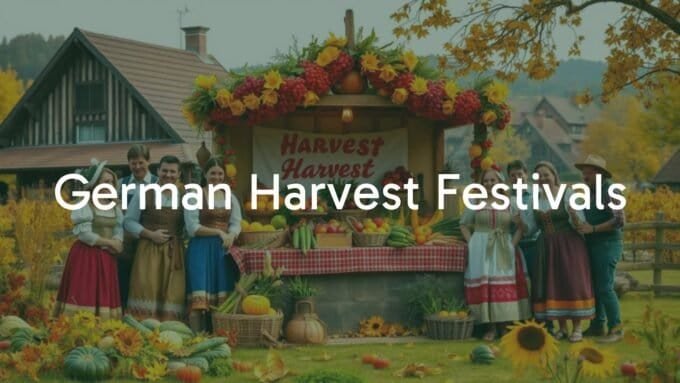What Is the Schultüte Tradition in Germany?
The Schultüte, known in English as the “school cone,” is a popular German tradition that marks a child’s first day at elementary school. The Schultüte is a large, colorfully decorated cone made of cardboard and filled with sweets, toys, and useful school items. Children receive this cone as they start school, making their big day feel special and exciting. Instead of being just a gift, the Schultüte stands for encouragement and support as kids begin this new part of their lives.
This tradition is closely linked to “Einschulung,” the first day of school celebration in Germany. On this day, families gather at the school for a welcoming event. The Schultüte is a big part of this ceremony, helping to calm any nerves children might have about starting school. The event usually includes group photos and the excitement of finding out what’s inside the cone when the school day is done.

When and Why Did the Schultüte Tradition Begin?
The Schultüte tradition goes back more than 200 years, first appearing in the early 1800s in Saxony and Thuringia. At first, it was mostly for children from wealthier families. The cones back then were simply made and usually held dried fruits, such as raisins. The purpose was to make the start of school happier and less stressful for children.

As public schools became more common, especially by the 1920s, the tradition spread across Germany. The main idea stayed the same: help children feel welcome to start their school journey with a positive and joyful experience. The Schultüte helps lessen worries about starting school, which is still its main role today.
How Is the Schultüte Used to Celebrate the First Day of School?
On the first day, or “Einschulung,” children proudly bring their Schultüte to school. Schools often hold a special event with speeches, songs, and official welcomes. The goal is to make new students feel happy and at ease in their new environment.
Traditionally, children wait until the end of the day to open their Schultüte, often at home with family. Long ago, teachers would hang the cones on a “sugar cone tree,” and children would “pick” their own when the day was done. Nowadays, kids mainly open their cones with their family, turning it into a much-awaited moment at home after the ceremonies.
Origins and Cultural Meaning of the Schultüte
The Schultüte is much more than a school item in Germany. It marks the important change from early childhood to primary school. Generations of Germans remember their first day of school with their Schultüte, making it a shared experience across the country. This tradition links the past and present, offering a familiar and comforting start for each new group of students.
The Schultüte helps turn what could be a scary time into a happy and memorable event. It recognizes a child’s growth and independence, while also showing steady support from their family. As Christiane Cantauw, a historian, has noted, the Schultüte helps children feel they are still an important part of the family, even as they take on new roles at school. This mix of celebrating independence and closeness with family makes the Schultüte a special symbol in German culture.

Where Did the Schultüte Tradition Start in Germany?
The tradition began in the eastern German states of Saxony and Thuringia. The first records go back to the early 1800s, and some sources mention even earlier dates. In the beginning, the cones were just simple paper bags with a few treats and were mainly for wealthier families.
Over time, as the idea caught on, families of all backgrounds took part. By the 1920s, when public schooling became the norm, the Schultüte had become a common sight everywhere in Germany, showing just how well-loved the tradition had become.
What Does the Schultüte Mean to German Families?
For many families, the Schultüte marks an important milestone: the move from preschool or kindergarten to being a schoolchild. It symbolizes growing up, learning, and starting something new. The ceremony of receiving the cone, especially if it happens at the school, makes the experience official and memorable for children.
The Schultüte also shows care and support from family members. Parents, grandparents, and relatives might all help pick out or make the cone and choose what to put inside. It sends a clear message to the child: “We are proud of you and support you as you start school.” This encouragement can make the whole process of starting school less stressful and more positive.
How Has the Schultüte Tradition Changed Over Time?
Like many traditions, the Schultüte has changed a lot since it began. Early cones were simple and held just a few dried fruits. Today, Schultüten are often large (sometimes up to 85 cm) and decorated with everything from favorite cartoon characters to LED lights and sounds. This change reflects changes in society, more variety of available products, and family preferences.
After World War II, especially in the 1950s, most families started buying Schultüten from stores instead of making them. This was seen as a sign that parents could provide something special. In recent years, some parents have gone back to making their own cones so they can add a personal touch. No matter how the cones are made or filled, the main meaning-welcoming a child to school-remains the same, even adjusting for challenges like war or changes to life in different parts of Germany.
Regional Differences in the Schultüte Tradition
The Schultüte tradition is practiced all over Germany, but some regions have their own ways of doing things. Differences in names, types of cones, and ways of celebrating show how local history and habits shape the tradition in small but noticeable ways.
For example, while the name “Schultüte” is used in most of Germany, people in the East-especially in Saxony where the custom started-often call it a “Zuckertüte” (sugar cone), highlighting its sweet origins.
Are There Differences Between North and South Germany?
Yes, there are some small differences between how people in northern and southern Germany celebrate with the Schultüte. The biggest differences are often between former East and West Germany, due to their separate histories.
For instance, in Saxony and areas of the East, the “Einschulung” celebration can be quite eventful, with lots of planning and a big party for the child, sometimes compared to a wedding. In the past, cones were rounder in the West and more angular in the East. Today, West Germans are sometimes more likely to make cones at home, while people in the East often buy them from stores. These habits are related to family traditions and work life, and while they aren’t strict rules, they show how history shapes modern practices.
Contents of a Schultüte: What Goes Inside?
The inside of a Schultüte is just as important as how it looks. Families try to pick a mix of fun and helpful items, designed to make school feel exciting but also to prepare children for their first lessons. What goes inside varies from family to family, but there are some common categories.
Usually, the cone holds items that are both for enjoyment and useful in class. This thoughtful mix helps children feel celebrated and ready for their new role as students.
Common Schultüte Contents List
| Type | Examples |
|---|---|
| Sweets & Treats | Gummy bears, chocolates (like Milka), marshmallow treats, cookies (such as Leibniz), fizzy candy |
| School Supplies | Pencils, erasers, colored pencils, notebooks, rulers, pencil case |
| Small Toys | Yo-yos, small plush animals, puzzles, figurines, hair accessories |
| Useful Extras | Water bottle, lunchbox, watch, fun stickers |
| Healthy Snacks | Granola bars, fruit, healthy cereal, or special bread |

Popular Sweets and Treats for Schultüten
Most Schultüten include lots of candy and chocolate, which are usually a child’s favorite part. Gummy bears are especially popular and come in many shapes and flavors. Chocolate bars (like Milka) and German marshmallow treats are common. Butter cookies, fizzy powder, and even different kinds of bread or cereal can also be found, depending on the family’s choices.
Non-Edible Gifts
A Schultüte usually includes school supplies, such as pencils, erasers, and colored markers. Other items might be a new watch, a pencil case, or something to brighten up the child’s desk. Toy surprises are also common, giving kids a mix of fun and something to look forward to besides just learning tools.
How to Choose, Make, or Buy a Schultüte
Families can choose to make a Schultüte themselves, buy one, or order a personalized version. All these options allow for creativity and let parents decide how much time and effort they want to put in. Making the cone at home is a fun project, but store-bought cones are easy to find and often beautifully decorated.
Regardless of how the cone is made or bought, the main purpose is to give the child a memorable and happy start to school.
Should You Buy or Make a Schultüte?
Some parents prefer to make the Schultüte by hand so they can pick colors and decorations their child loves. This can be a special family project and adds a personal touch. Others find it easier to buy ready-made cones, especially if they are short on time or not confident in crafts. Store-bought cones can also be very colorful and detailed, with themes that match a child’s favorite interests. What matters most is the care and thought behind the gift, not whether it’s homemade or purchased.
Tips for Making a Schultüte Yourself
- Start with a big sheet of colored poster board.
- Roll it into a cone and secure it with strong tape.
- Trim the top to make an even opening.
- Decorate with stickers, pictures, drawings, or anything your child likes.
- Attach tissue paper to the top for decoration and to cover the contents.
- Fill the bottom with soft paper to cushion items, then add treats and gifts.
Where to Buy a Ready-Made Schultüte in Germany
Pre-made Schultüten are available in many stores from July to September. You can find them in school supply and stationery shops, department stores, supermarkets, and online on websites like Etsy and Amazon. Some companies also make cones that can be personalized with the child’s name or favorite design. With so many choices available, finding a Schultüte that matches your child’s interests is usually simple.
The First Day of School: How Families Celebrate
The first school day, or “Einschulung,” is a major event for families in Germany. The day is carefully planned to be a joyful and supportive start to a child’s new life as a student, with the Schultüte being a big part of the celebrations, but not the only tradition involved.
The special events of the day, from leaving for school to the moment the cone is opened at home, all aim to make children feel proud and happy about their achievement.
Presenting the Schultüte
Today, most children are given their Schultüte by parents or close relatives, either before leaving home or as they arrive at school. This is a photo-worthy moment, with families often capturing the child smiling and holding their cone. The Schultüte usually stays closed until after school, letting children look forward to opening it all day. Once home, discovering the gifts inside becomes a small family party in itself.

Other Common First Day Traditions
Besides the Schultüte, families and schools mark the day with other customs. Schools often hold a welcome event with speeches, songs, and maybe performances by older students. After leaving school, families might enjoy a special meal together and take lots of photos to remember the occasion. The whole day is treated like an important celebration, almost like a graduation or wedding for the child, highlighting how much German culture values education and this new beginning.
Frequently Asked Questions about Schultüte in Germany
Although well-known in Germany, people sometimes have questions about the Schultüte tradition, especially as modern life brings new ideas and challenges. Topics include whether older kids should get cones, the tradition’s environmental impact, and how to take part in the custom outside Germany.
Here are some answers to common questions:
Should Older Children Get a Schultüte?
Usually, Schultüten are meant for children starting Grade 1. However, some families and friends now give smaller cones to older students marking big educational milestones, such as starting high school or college. Still, the main use is for first-grade students on their first school day.
Is the Tradition Harmful to the Environment?
Modern Schultüten can sometimes produce a lot of waste, especially if they use materials like plastic and glitter. Individually wrapped gifts and treats add to the trash. More families are now choosing to use environmentally friendly materials, reusable cones, or items that can be recycled. Using less packaging and longer-lasting gifts helps keep the tradition more eco-friendly.
How Can Families Abroad Join in the Schultüte Tradition?
Families living outside Germany, including non-Germans who want to adopt this fun custom, can easily take part. Schultüten can be ordered online or made at home with craft supplies. The main idea is to make the day special and help the child feel positive about starting school. This can work anywhere, and some international schools now hold their own Schultüte events, showing how easily the tradition can be shared. No matter where you live, you can wish your child “viel Glück und Erfolg” (good luck and success) on their first school day!












Leave a comment